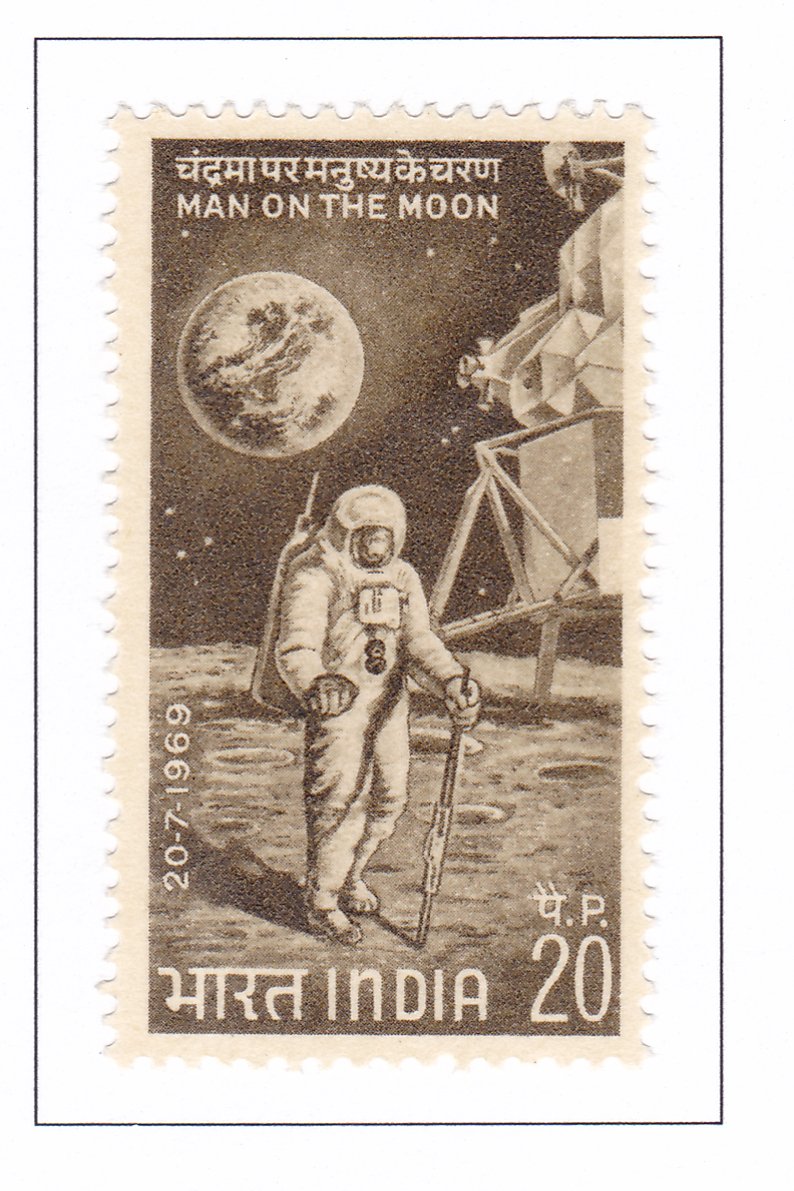Man on The Moon

Technical Data
| Date of Issue | November 19, 1969 |
|---|---|
| Denomination | 20 nP |
| Quantity | 3,000,000 |
| Perforation | comb 14 x 14½ |
| Printer | Security Printing Press, Nashik |
| Watermark | No Watermark |
| Colors | Olive brown |
| Catalog Codes |
Michel IN 487 Stamp Number IN 503 Yvert et Tellier IN 286 Stanley Gibbons IN 601 |
| Themes | Astronauts | Famous people | Moon | Moon Landing | Outer Space | Space Traveling |
The moon, long a source of inspiration for poets and lovers, a companion during nocturnal activities, and a guide for sailors, has always retained an aura of mystery despite its familiarity. Fifteen years ago, the idea of sending humans to the moon would have been dismissed as mere fantasy, but today, it has become a technological reality. On July 20, 1969, when Neil Armstrong took that historic first step onto the lunar surface, mankind’s conquest of space entered a new phase of significance. His famous words, “one small step for man, one giant leap for mankind,” echoed the collective achievement of humanity.
President John F. Kennedy had set the ambitious goal of landing a man on the moon before the end of the 1960s in his speech to the United States Congress on May 25, 1961. This goal, once seen as audacious, was achieved with the Apollo 11 mission, marking the pinnacle of technological progress in the 1960s. The exploration of the moon was just the beginning; the next decade promised further fruitful endeavors, potentially extending to other planets like Jupiter and Mercury. By 1980, scientists hoped to definitively answer the question of whether there were life forms on Mars.
The Soviet Union’s successful launch of a space platform also contributed to the advancement of space exploration, facilitating mankind’s continued progress in this realm. The geological complexity of the moon, revealed through samples brought back by astronauts, has intrigued scientists and led to widespread collaboration and experimentation among experts worldwide.
As the excitement of the Apollo 11 mission subsided, the United States launched another space probe, Apollo 12, with the goal of landing astronauts on the moon’s surface once again. Scheduled for November 19, 1969, this mission aimed to build upon the achievements of its predecessor.
The Indian Posts & Telegraphs Department congratulated the astronauts of Apollo 11 and wished them well, while also expressing anticipation for the success of Apollo 12. To commemorate these historic events, the department issued a commemorative stamp featuring ‘Man on the Moon,’ honoring the remarkable achievements of humanity in space exploration.
